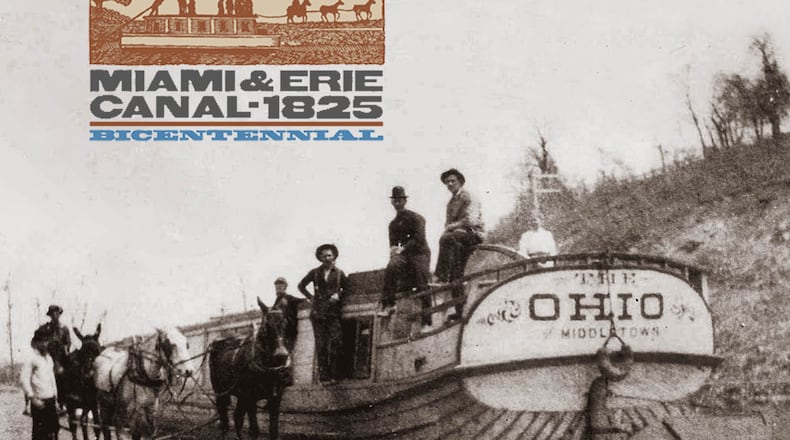The event starts at 11 a.m. and is open to the public. Parking is on Curtis Avenue. The ceremony will feature music by the Cincinnati Brass Band, presentation of the colors by Sons of the American Revolution, Richard Montgomery Chapter, proclamations and a re-enactor of Gov. DeWitt Clinton, who lifted the first spadeful of dirt to start the canal in 1825.
On the morning of July 21, 1825, citizens of the small village of Middletown and those of nearby communities, made their way to a field south of the town, owned by its leading citizen Daniel Doty, said Sam Ashworth, local historian.
He said most were aware that work had started on the Miami Canal, but few, if any, could imagine the impact the canal would have on their lives, and those of generations to come.
In 1825, there were 314 citizens living in the village of Middletown, but as a direct result of the legacy of the Miami Canal, later Miami & Erie Canal, Middletown became an industrial city.
“It changed everything almost immediately,” Ashworth said of the canal.
By 1827, the canal was complete from Middletown to just north of Cincinnati, Ashworth said.
That opened the opportunity for Middletown to enter the industry world. The city’s first industry was pork packing, and the canal allowed farmers to ship their products to Cincinnati, he said.
Then paper companies started opening in Middletown, and when George M. Verity was deciding whether to build a steel company in Zanesville or Middletown, the location of the canal played a major role in his decision, Ashworth said.
Besides Armco, later AK Steel, then Cleveland-Cliffs, all industries in the city “had a connection” to the canal that closed in 1929, he said.
The Miami & Erie Canal Bicentennial projects were made possible by grants from the W.E. Smith Family Charitable Trust, the Middletown Community Foundation and the Miriam G. Knoll Charitable Foundation.
In case of rain, the ceremony will take place at the Middletown Historical Society Shartle House, 120 N. Verity Parkway.
About the Author

